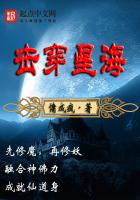Of water, too, are some wines and urine and vinegar and lye and whey and serum: for they are all congealed by cold. In iron, horn, nails, bones, sinews, wood, hair, leaves, bark, earth preponderates. So, too, in amber, myrrh, frankincense, and all the substances called 'tears', and stalactites, and fruits, such as leguminous plants and corn. For things of this kind are, to a greater or less degree, of earth. For of all these bodies some admit of softening by heat, the rest give off fumes and are formed by refrigeration. So again in natron, salt, and those kinds of stones that are not formed by refrigeration and cannot be melted. Blood, on the other hand, and semen, are made up of earth and water and air. If the blood contains fibres, earth preponderates in it: consequently its solidifies by refrigeration and is melted by liquids; if not, it is of water and therefore does not solidify. Semen solidifies by refrigeration, its moisture leaving it together with its heat.
11
We must investigate in the light of the results we have arrived at what solid or liquid bodies are hot and what cold.
Bodies consisting of water are commonly cold, unless (like lye, urine, wine) they contain foreign heat. Bodies consisting of earth, on the other hand, are commonly hot because heat was active in forming them: for instance lime and ashes.
We must recognize that cold is in a sense the matter of bodies.
For the dry and the moist are matter (being passive) and earth and water are the elements that primarily embody them, and they are characterized by cold. Consequently cold must predominate in every body that consists of one or other of the elements simply, unless such a body contains foreign heat as water does when it boils or when it has been strained through ashes. This latter, too, has acquired heat from the ashes, for everything that has been burnt contains more or less heat. This explains the generation of animals in putrefying bodies: the putrefying body contains the heat which destroyed its proper heat.
Bodies made up of earth and water are hot, for most of them derive their existence from concoction and heat, though some, like the waste products of the body, are products of putrefaction. Thus blood, semen, marrow, figjuice, and all things of the kinds are hot as long as they are in their natural state, but when they perish and fall away from that state they are so no longer. For what is left of them is their matter and that is earth and water. Hence both views are held about them, some people maintaining them to be cold and others to be warm; for they are observed to be hot when they are in their natural state, but to solidify when they have fallen away from it. That, then, is the case of mixed bodies. However, the distinction we laid down holds good: if its matter is predominantly water a body is cold (water being the complete opposite of fire), but if earth or air it tends to be warm.
It sometimes happens that the coldest bodies can be raised to the highest temperature by foreign heat; for the most solid and the hardest bodies are coldest when deprived of heat and most burning after exposure to fire: thus water is more burning than smoke and stone than water.
12
Having explained all this we must describe the nature of flesh, bone, and the other homogeneous bodies severally.















